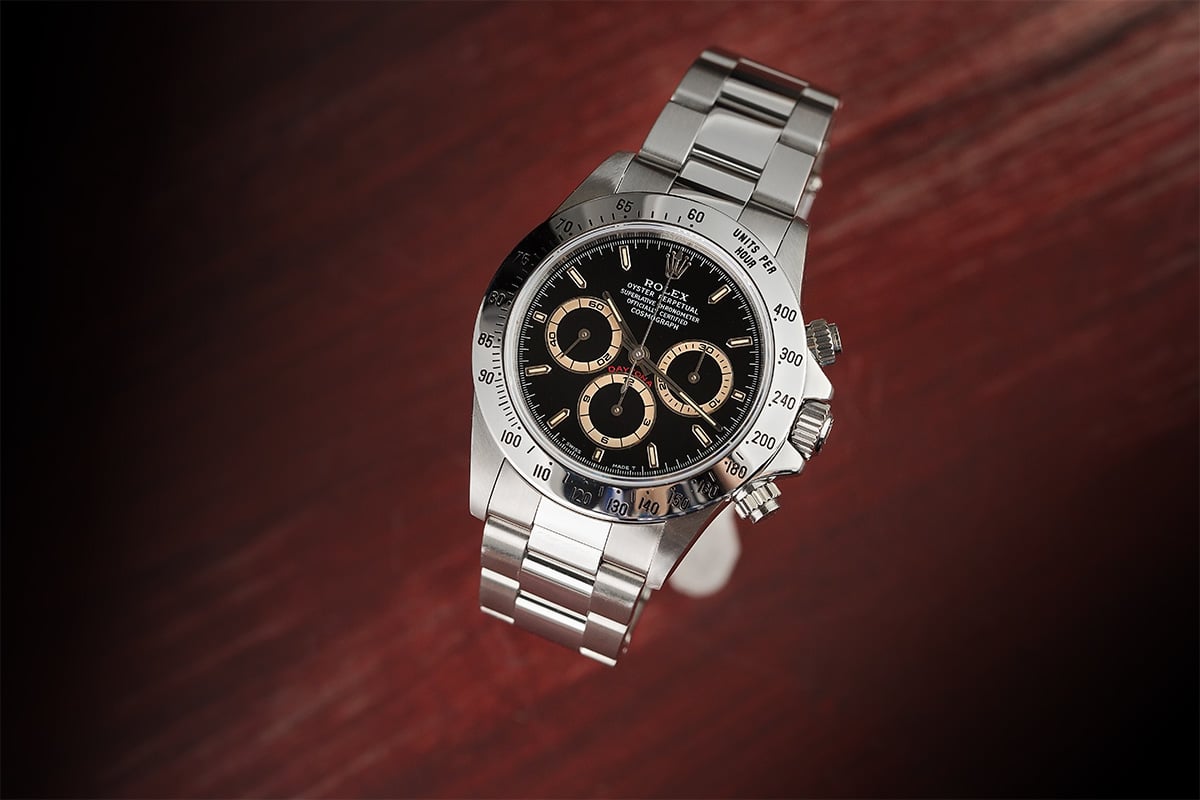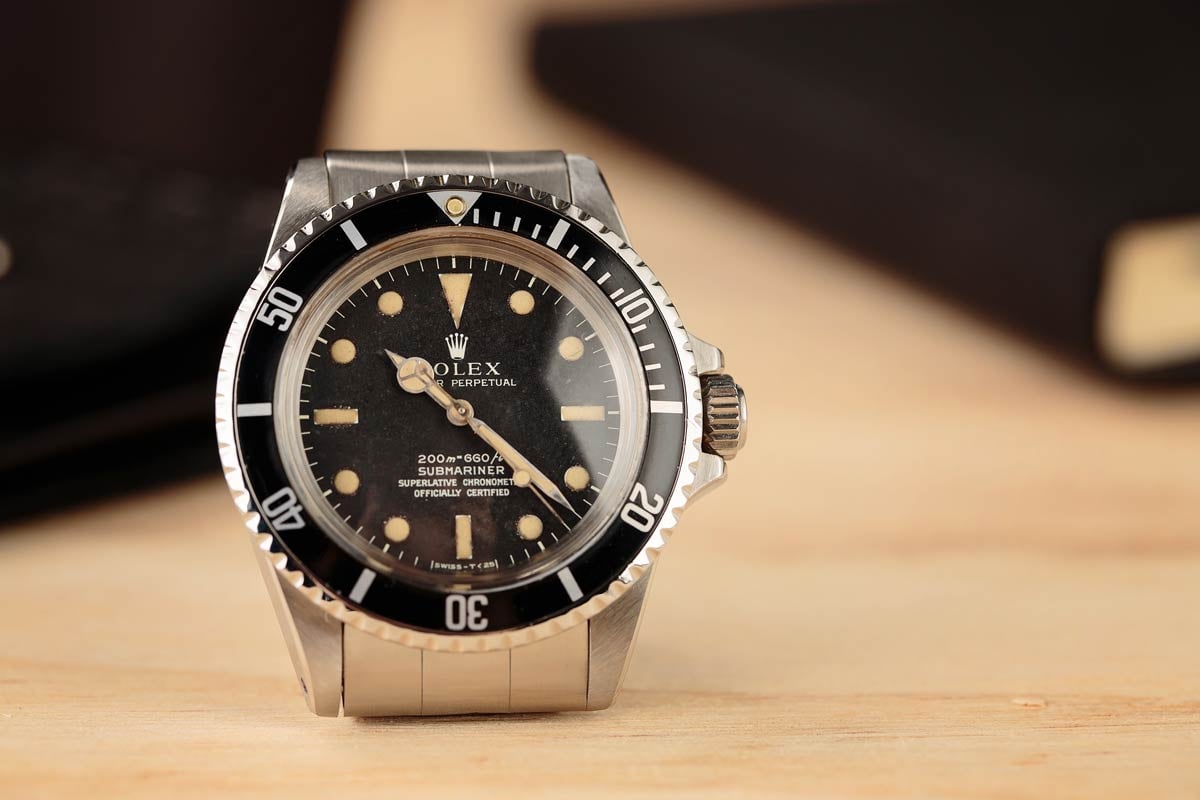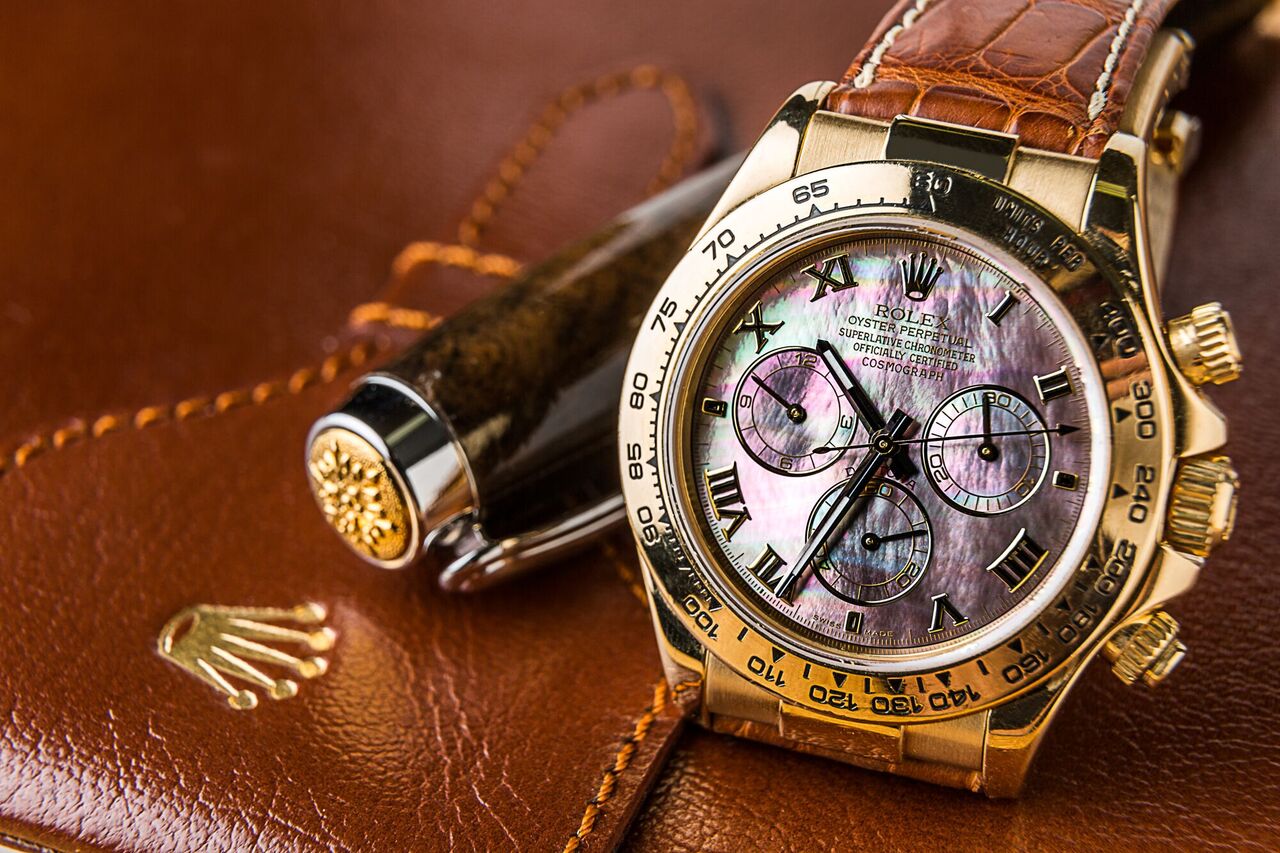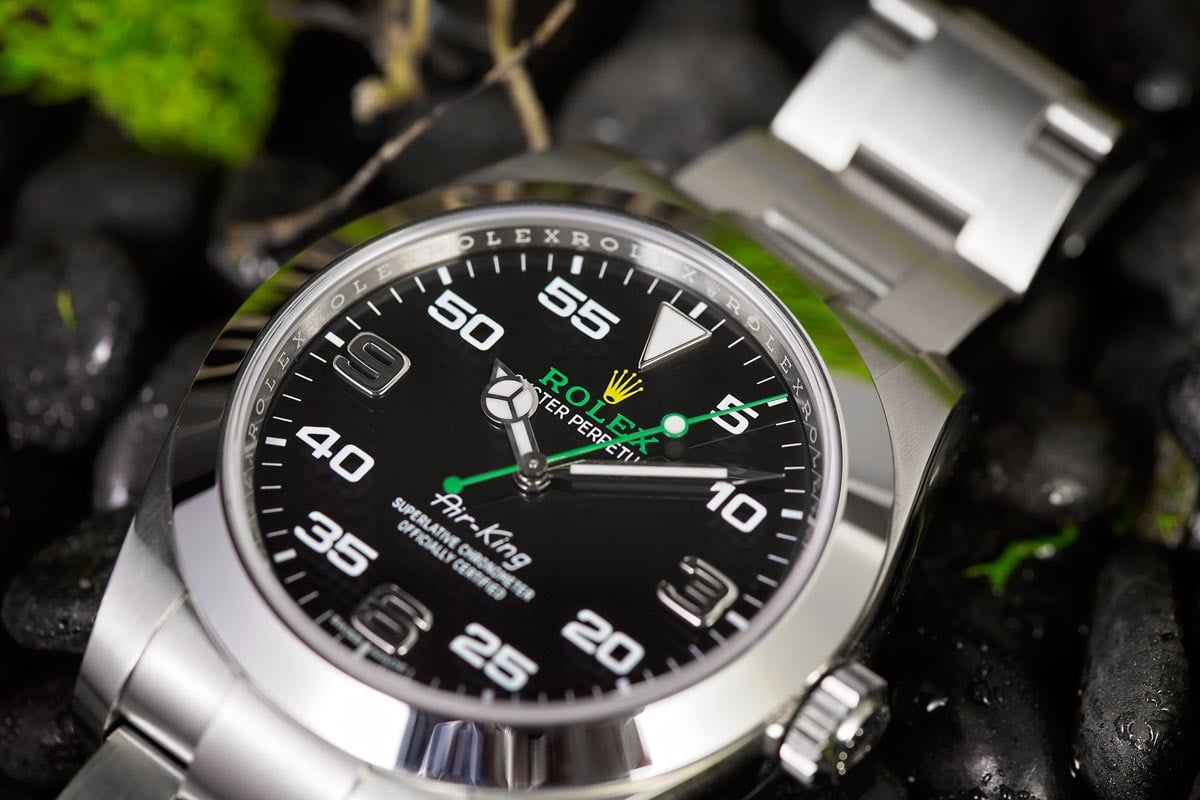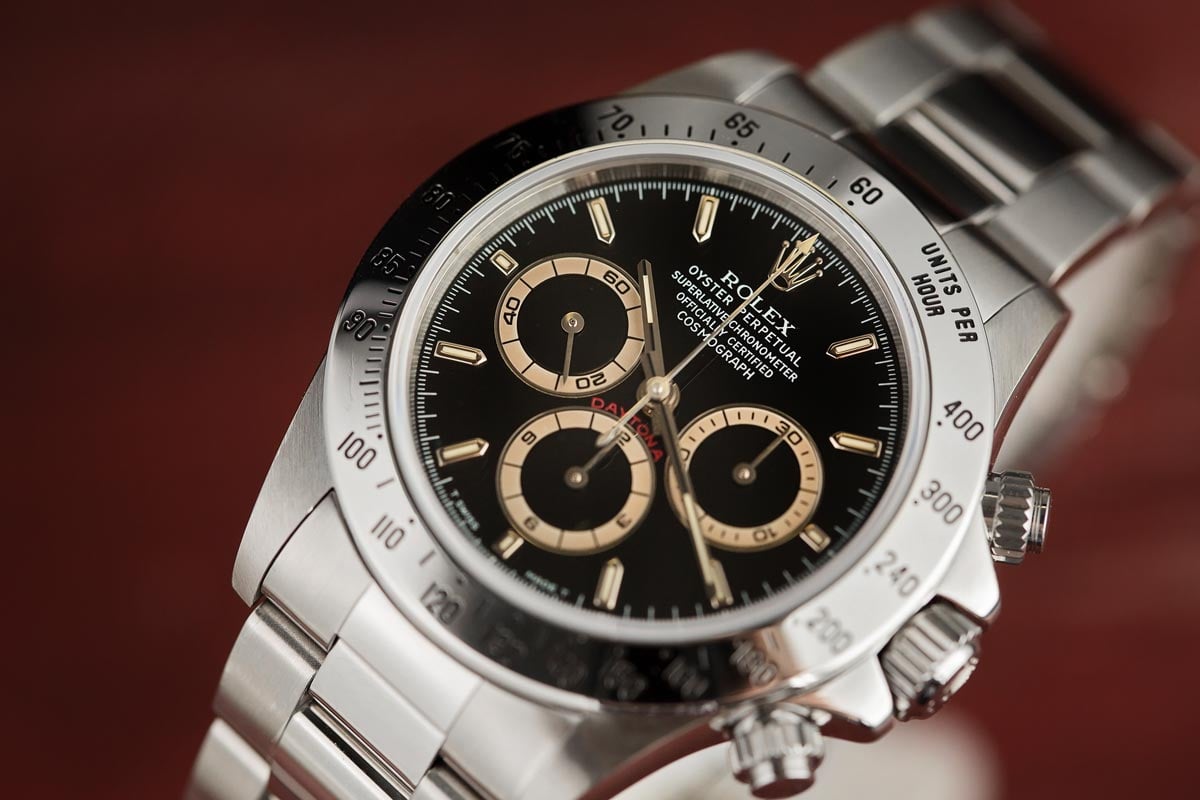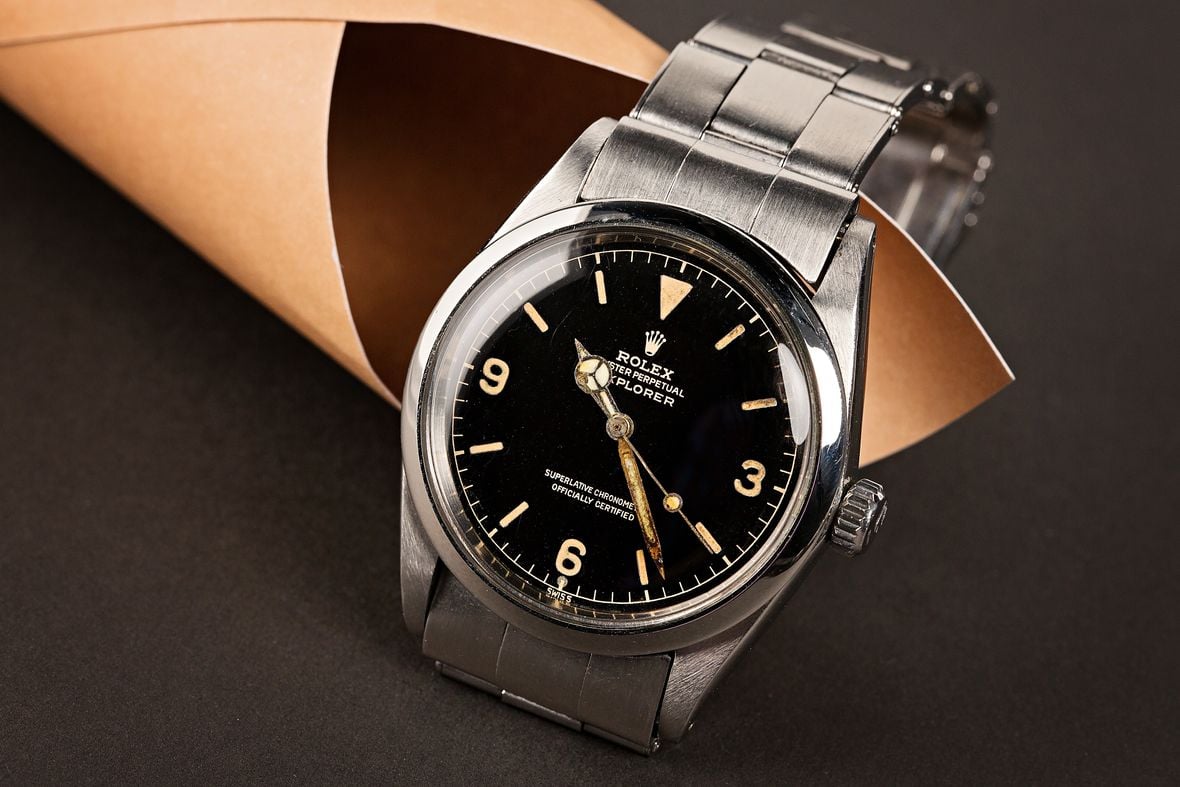Of all the various species of complication to be found on luxury watches, the chronograph is one of the most useful. Beyond their practicality, mechanical chronograph watches are also among the most desirable. A modern Rolex Daytona sells for roughly three times its brand-new retail price on the secondary market – simply due to the insane level of desirability of the piece. Additionally, certain rare vintage chronograph watches like the Rolex “Paul Newman” Daytona can be worth well over six figures. So, what is a chronograph watch?
What Is a Chronograph Watch?
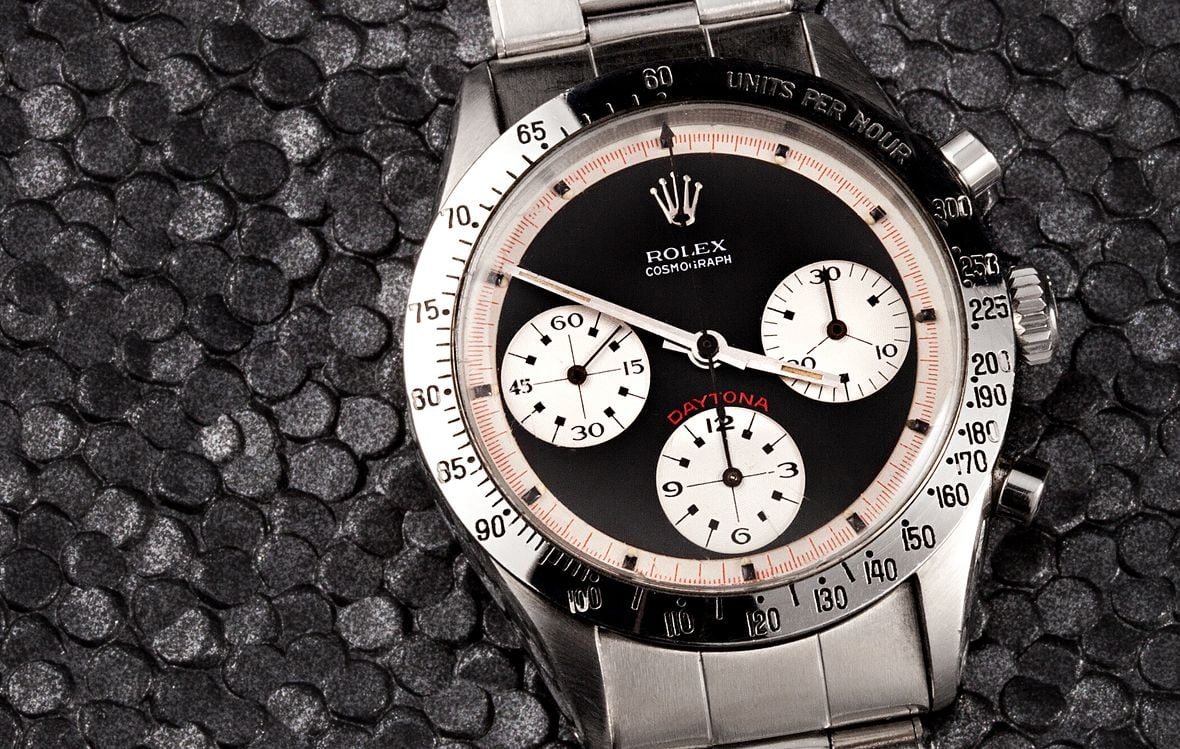
A chronograph watch is a timepiece that acts as a stopwatch and displays the regular 12-hour time. The ability to precisely time events is something we can all take advantage of, whether we’re competing in any number of sports, heading out for a run, or even trying to make dinner without setting off the smoke alarm.
It is a feature that has been around for over a hundred years, first in pocket watches and later, with much of the early development pioneered by Breitling, on wristwatches. Today, practically every brand has at least one chronograph in its arsenal, and the function has evolved over the years into several different types.
Below, we will take a look at some of the most popular variations, and explain what makes each distinctive. But first, a couple of terms you will often come across as you delve into the world of mechanical stopwatches.
How to Use a Chronograph Watch
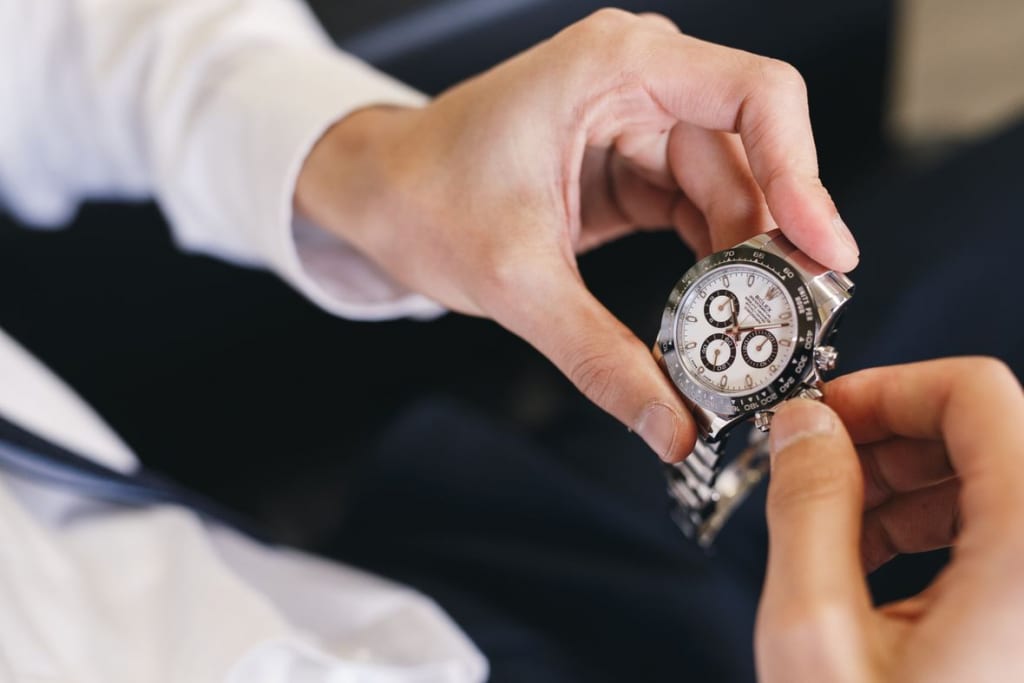
Operating a chronograph watch begins with the familiarization of its pushers. Typically, the top button initiates the stopwatch function. A second press stops the timer, allowing you to record elapsed time. Resetting the hands to their original position requires a firm press on the bottom pusher. Mastery of these steps adds functionality to your timepiece, beyond mere timekeeping.
What are Chronograph Watches Used For?
Chronograph watches have transcended their historical aviation roots, becoming versatile instruments for athletes, chefs, and professionals alike. They assist in timing races, measuring cooking intervals, and even calculating speed over a known distance. Their utility is only limited by the wearer’s necessity and imagination.
How Does A Chronograph Watch Work?
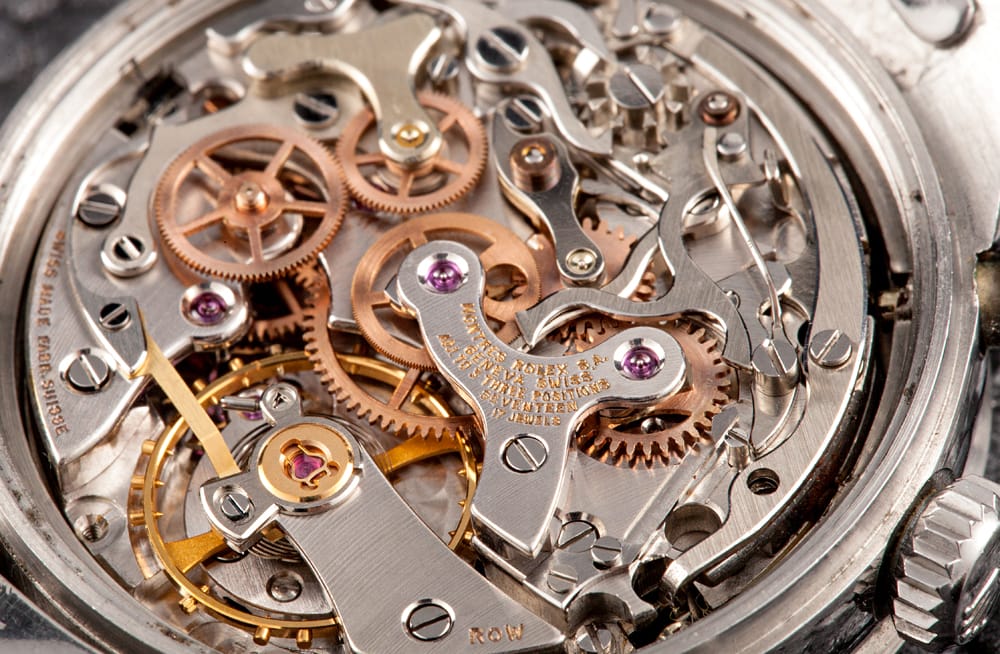
At the heart of a chronograph watch lies a complex mechanism, driven by a series of gears and springs. Upon activation, the central second-hand moves, driven by the escapement’s rhythmic release of energy. Additional complications may include minute and hour counters, providing a comprehensive timing tool on your wrist.
What are the three (3) dials on a chronograph watch?
Chronograph watches typically feature three subsidiary dials. The first track seconds are essential for accurate timing. A second dial counts elapsed minutes, while the third keeps track of hours passed. This triumvirate allows for detailed time measurement over extended periods.
Sub-Dials and Bi-Compax vs. Tri-Compax Models
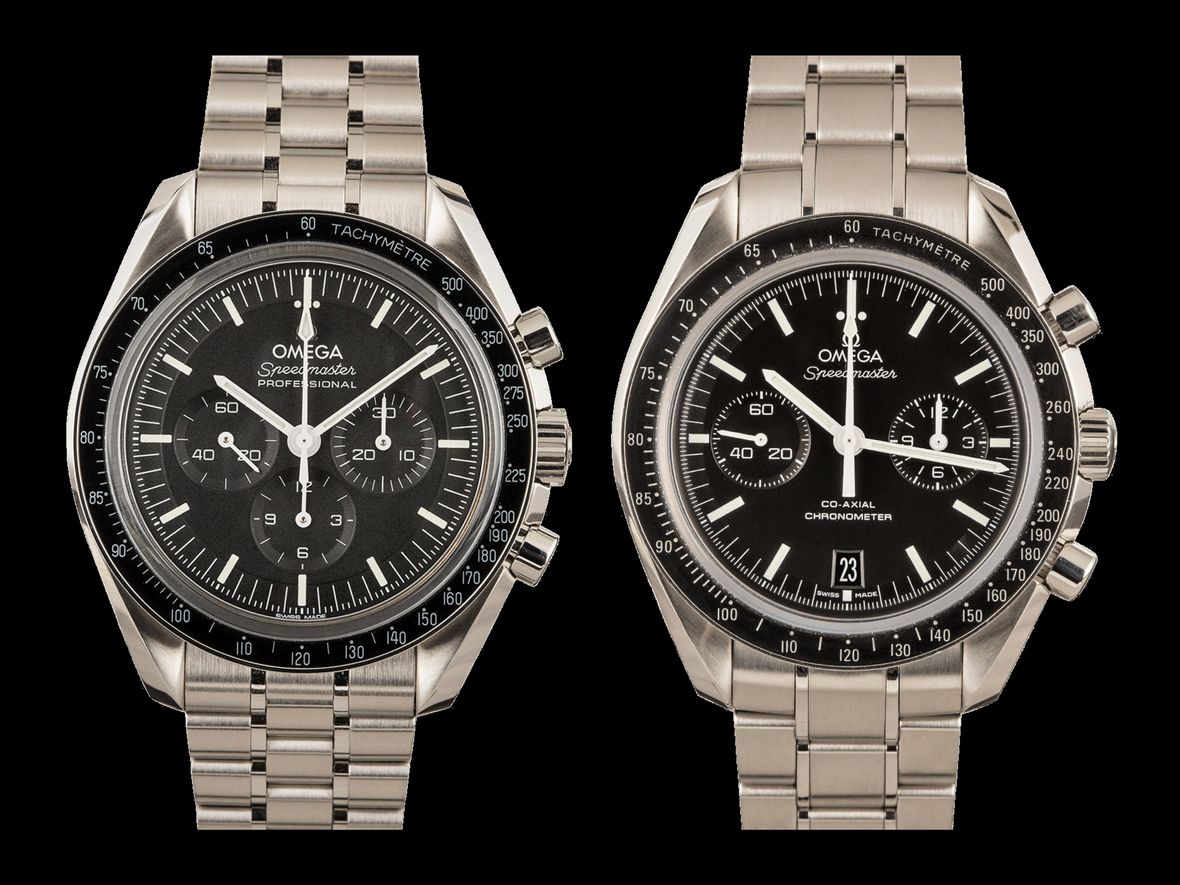
As the name suggests, a sub-dial is a smaller dial contained within the area of the watch’s main dial. On a chronograph, these additional displays are called on to measure different elapsed time readouts.
In general terms, a chronograph will come in either a bi-compax form, otherwise known as a twin-register, or else a tri-compax, or triple register. The names relate to the number of sub-dials each watch uses.
Bi-compax models use two subsidiary dials, one that is constantly running as the standard seconds counter, while the other is usually a minute totalizer which only comes into operation when the chronograph is in use.
With a tri-compax, using three sub-dials, again one is the main seconds hand, the second is a chronograph minute counter and the third measures elapsed hours.
As a general rule, bi-compax chronographs record for up to one hour, while tri-compax models can time up to 12 hours. With that in mind, there can often be variations and exceptions to this rule depending on the movement and the design of the watch. Now, let’s look at the different types of chronographs available.
The Standard Chronograph
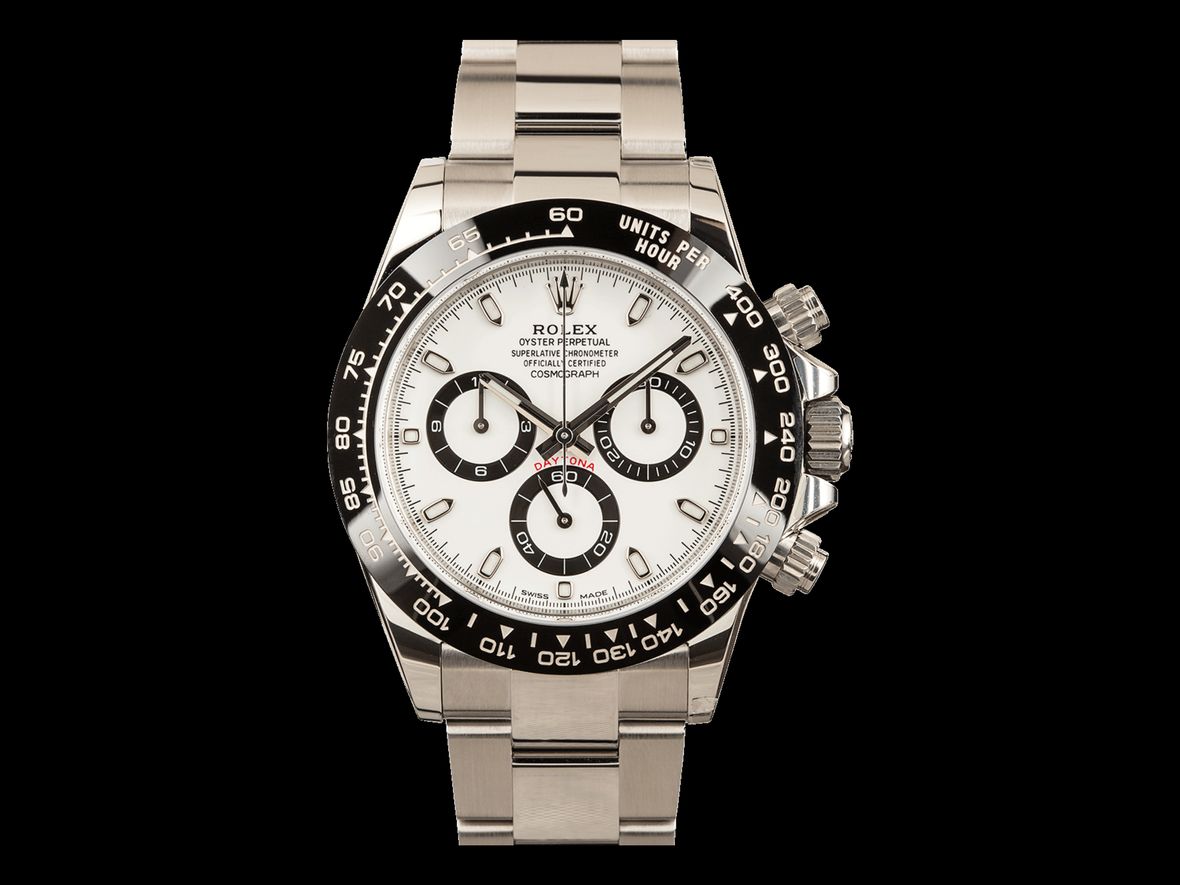
About Standard Chronograph Watches
By far the most plentiful, this form of chronograph has two push buttons, generally straddling the crown at the two and four o’clock positions. Pressing the top button sets the counters going, and pushing it a second time stops them.
From there, you can either press the top button a third time to set the timer off again from the same position or else reset the chrono hand back to zero by pressing the lower button.
Legendary names such as the highly desirable Rolex Daytona and the Omega Speedmaster are both this type, and most of the chronograph watches available on the market follow this standard format.
The Monopusher Chronograph
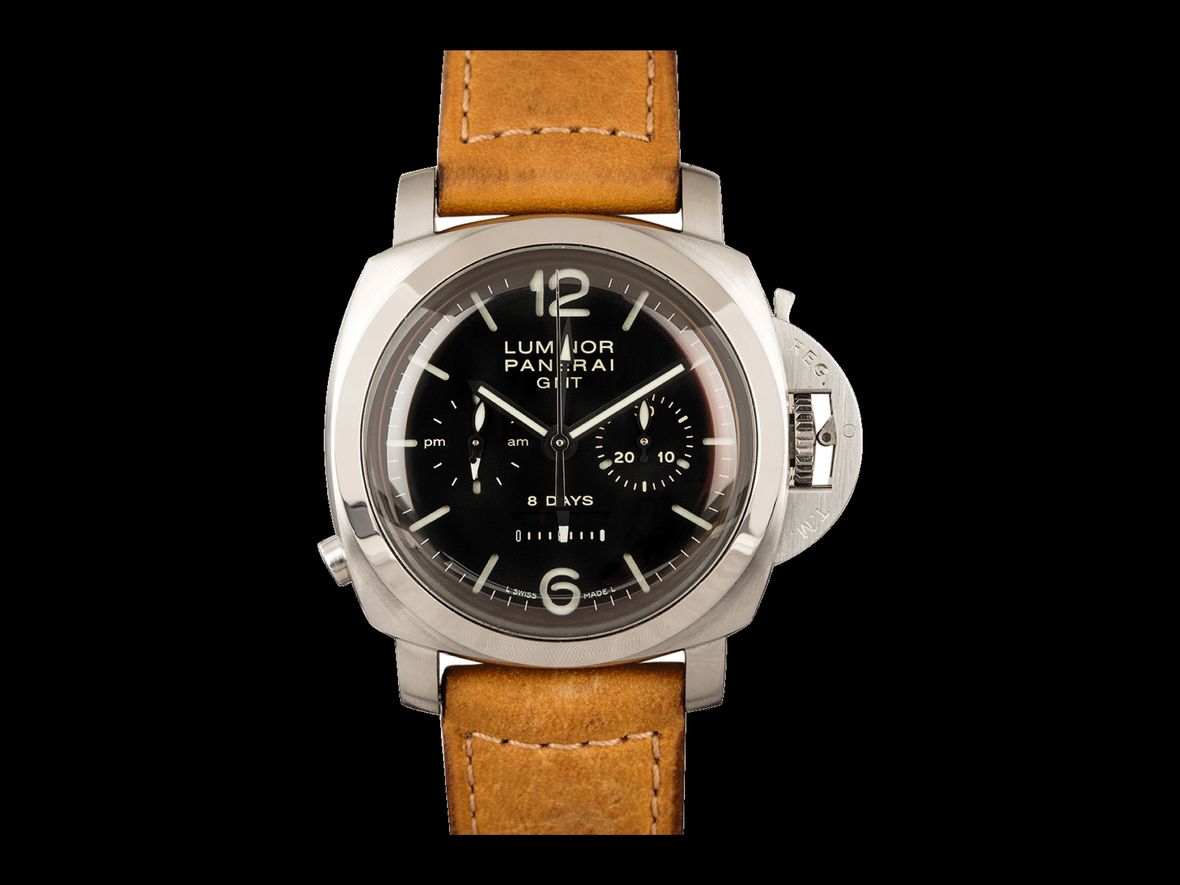
About Monopusher Chronograph Watches
No prizes for guessing the difference here. Where the most common style of chronograph has two buttons, the Monopusher only has one.
It gives the advantage of a cleaner looking case, with some brands even incorporating the button into the crown itself, but with the downside of a somewhat diminished performance. As all the functions are controlled by the single pusher, it is not possible to continue the timing again once it has been stopped. The hand will always go back to zero with the third press.
Panerai’s extraordinary, and extraordinarily named, Luminor 1950 Ceramic 8 Days Chrono Monopulsante GMT is a modern take on the complication.
The Flyback Chronograph
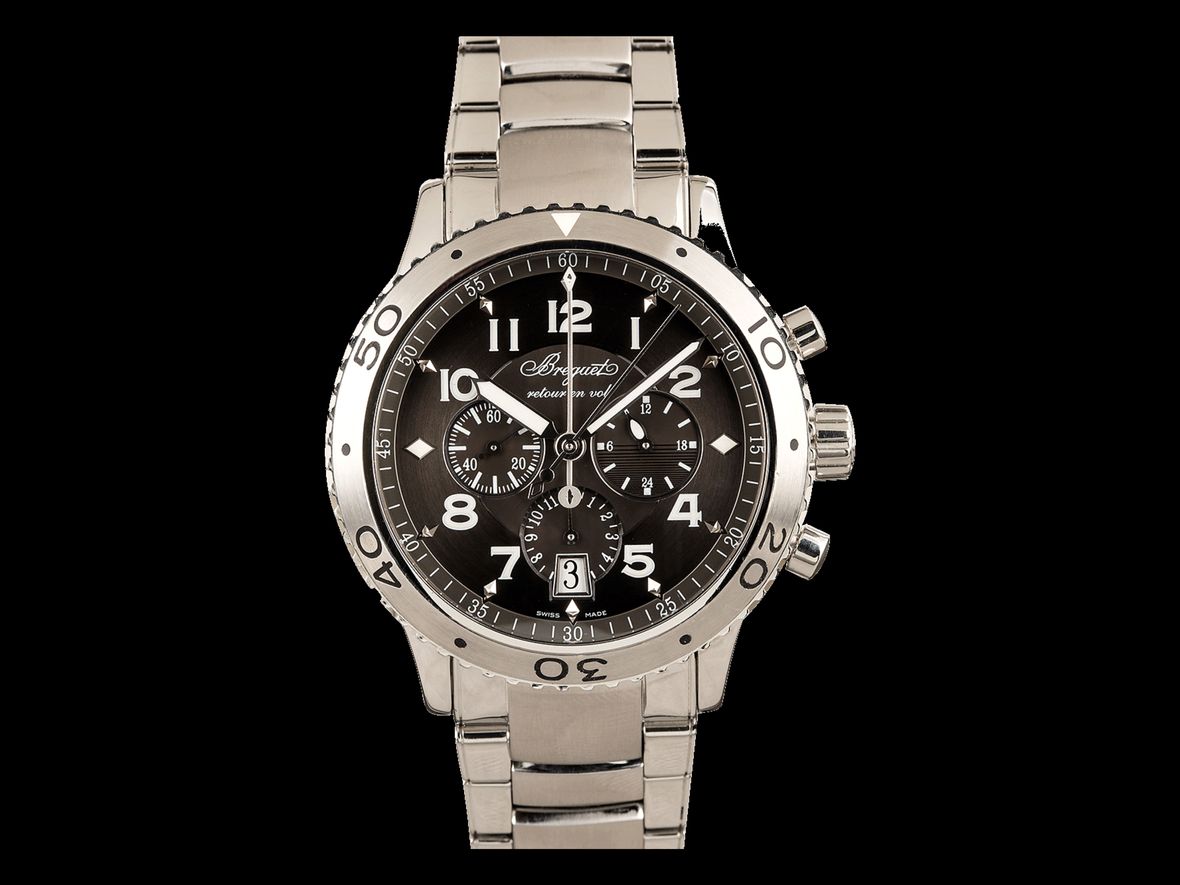
About Flyback Chronograph Watches
Looking very similar to the common type, with two push buttons, the Flyback has an additional feature that comes in extremely useful if recording an event with multiple laps.
It works in the normal way, with the top button starting and stopping the timer and the bottom one resetting it. But the lower button can also be pressed when the chronograph is in action, which causes the main hand to reset to zero and immediately start again, all with just a single push.
It means the operator doesn’t have to press the top button to stop the hand, then the bottom one to reset it, and then the top one a second time to restart it again, all the while losing vital split seconds of whatever race they are trying to record.
The Rattrapante / Split-Seconds Chronograph
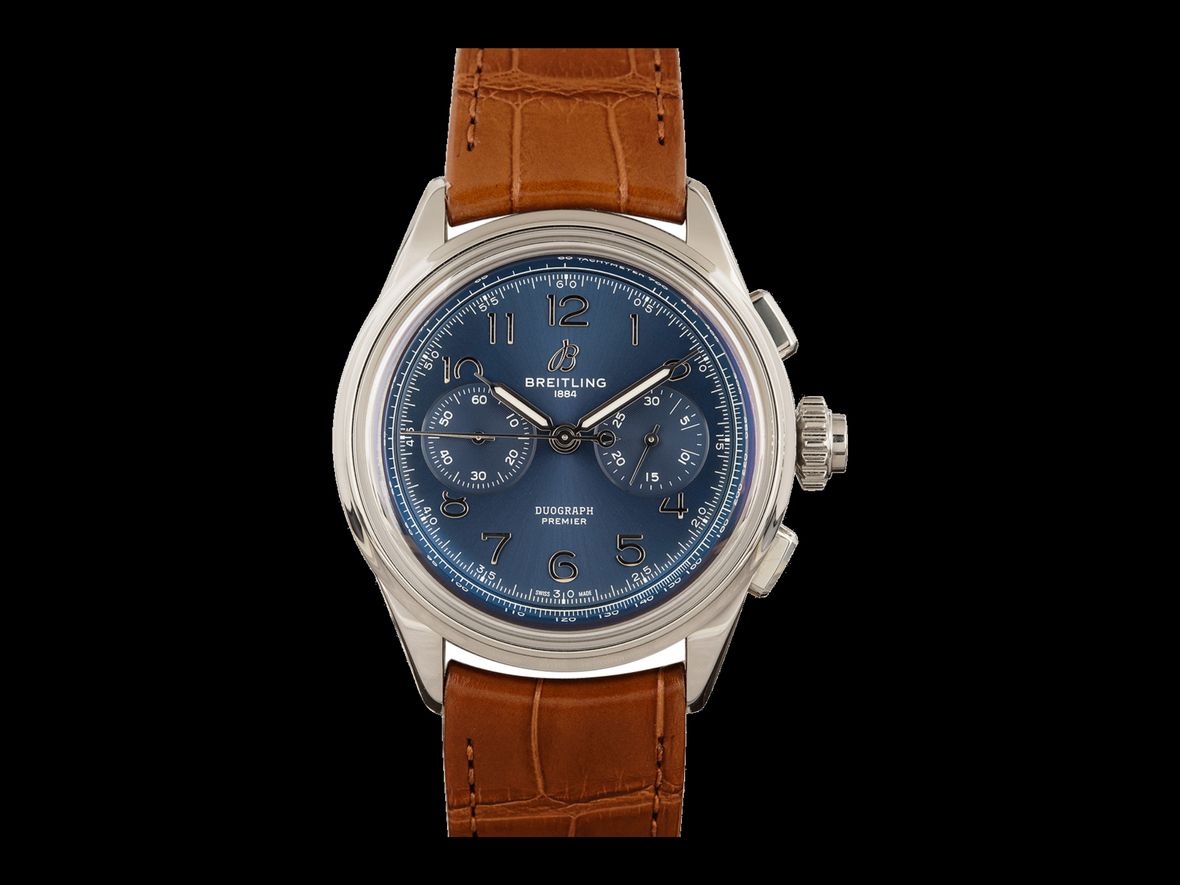
About Split-Seconds Chronograph Watches
The Rattrapante, or split-seconds chronograph is the most complicated and usually most expensive type. Additionally, beyond the standard Rattrapante chronograph, there are also triple-split models, although these can cost six-figures.
Along with the buttons at two and four o’clock, the Rattrapante has an additional pusher, most commonly found on the opposite side of the case at the 10 o’clock. It is this third button which controls the split-second function. Split-seconds chronograph watches also have a second chronograph hand, tucked away beneath the main one, which is not visible until it comes into use.
After starting timing in the normal way, with the first pusher, pressing the split-seconds button stops the upper of the two hands, while the bottom one continues on. Therefore, if you are timing two competitors, you can stop one hand as the winner crosses the line, and the second as their opponent finishes and instantly be able to see the difference.
Alternatively known as a doppel-chronograph or a double-split, the Rattrapante (from the French for ‘catch up’) is generally only found at the very top end of horology. On the most affordable side of things, you can sometimes find one on the pre-owned market for slightly above the 10k mark, but most will cost tens of thousands of dollars, and certain split-seconds chronograph watches can sell for small fortunes.
What is the difference between a chronograph and a chronometer?
Precision is the realm of the chronometer, certified for accuracy in various conditions. Chronographs, however, boast a stopwatch function, prioritizing functionality with timekeeping versatility. While all chronometers measure time with precision, not all chronographs meet the stringent standards to be deemed a chronometer.
What is the difference between chronograph watches and normal watches?
Chronograph watches stand out with their integrated stopwatch capability, easily recognized by additional dials and pushers. Traditional watches may lack these features, focusing solely on time display. The choice between them often hinges on the wearer’s preference for either complication or simplicity.
Is a chronograph watch worth it?
The value of a chronograph watch is subjective, rooted in the wearer’s appreciation for craftsmanship and functionality. For those who delight in mechanical complexity or frequently time events, a chronograph is indispensable. Others may prefer the understated elegance of a classic timepiece, making the decision a personal reflection of style and utility.
